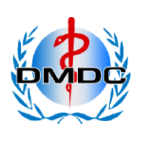How to prepare for a mammogram: Early detection of breast cancer

When it comes to breast cancer, early detection can make all the difference.
That’s why regular mammograms are essential for women’s health. If you’re scheduled for a mammography scan, preparing well can not only ease your nerves but also improve the accuracy of the screening.
Here’s everything you need to know—from what to wear to how to mentally prepare—so you can walk in with confidence and peace of mind.
What is a mammogram?
A mammography scan is a low-dose X-ray that helps detect breast cancer in its earliest stages—even before symptoms appear. It captures detailed images of breast tissue, helping radiologists to spot abnormalities like lumps, masses , microcalcifications or structural changes.
There are two main types of mammograms:
- Screening mammogram – for women over 40 years with no symptoms.
- Diagnostic mammogram – for women experiencing signs such as a lump , swelling , pain or discharge.
Whether you are preparing for a screening or diagnostic mammogram, knowing what kind of mammogram you’re having helps you understand the process and set the right expectations.
Who should get a mammography treatment?
- Women aged 40 and above – for routine breast cancer screening
- Women aged 50–74 – recommended every 1–2 years
- Women with a family history of breast cancer – may need earlier and more frequent screening
- Women with genetic risk factors (e.g., BRCA1/BRCA2) – should begin screening earlier
- Anyone with breast symptoms – such as lumps, swelling , pain or nipple discharge
Always consult your doctor to determine the right screening schedule for you.
Why does early detection matter?
Detecting breast cancer early can make a major difference in treating breast cancer. When breast cancer is found in its earliest stages—often through routine mammography scan—it is typically smaller, has not spread, and is more treatable. This significantly improves survival rates and often allows for less invasive treatment options.
Catching cancer early can mean:
- Higher treatment success rates
- Less aggressive therapies (like avoiding chemotherapy)
- Lower medical costs
- A greater chance of preserving breast tissue
- Peace of mind through regular monitoring
Mammograms can detect abnormalities up to two years before they can be felt, giving you a head start on managing your health. That’s why understanding how to prepare for a mammogram and making it a regular part of your wellness routine is so important.
How to prepare for a mammogram?
Preparing for a mammogram is simple and can help ensure accurate results while minimizing discomfort.
- Schedule smartly: Book your appointment about a week after your menstrual period, when your breasts are less tender.
- Skip certain products: On the day of your mammography treatment, avoid using deodorants, powders, lotions, or perfumes on your underarms or chest, as they can interfere with the X-ray.
- Wear a two-piece outfit: You’ll be asked to undress from the waist up, which is more convenient.
- Bring past records: If you’ve had previous mammograms, carry the reports or inform the clinic so they can compare images.
- Limit caffeine: To reduce breast tenderness, avoid coffee, tea, and chocolate for 24–48 hours before your exam.
- Share relevant info: Let the technician know if you’re pregnant, breastfeeding, or have breast implants.
- Stay relaxed: The procedure usually takes 20–30 minutes and is generally quick and safe.
- Ask questions: If you’re feeling anxious or uncertain, don’t hesitate to speak up—it can ease anxiety and make the experience more comfortable.
What to expect during the mammography treatment?
During a mammography treatment, your breast is gently placed on a support plate attached to the X-ray machine. It is then briefly compressed between two flat plates—this may cause mild discomfort, but it’s important to evenly spread the breast tissue for clearer images.
The mammography machine directs X-rays through your breast, which are captured by a detector on the other side. This detector converts the information into electronic signals that a computer uses to create a digital image—known as a mammogram. The same process is then repeated for the other breast.
The entire exam typically takes 20 to 30 minutes, and you can go back to your daily routine right after the exam.
A radiologist will examine the images, and your doctor will inform you regarding the results at the same time giving you peace of mind and clarity.
While the idea of compression may sound intimidating, the procedure is quick, safe, and one of the most effective methods for detecting breast cancer in its early stages.
Contact DMDC for your mammography treatment in Dubai
Take control of your breast health with expert mammography services at DMDC in Dubai. Whether you’re coming in for your routine screening or need advanced 3D mammography, our skilled and compassionate team is committed to providing accurate diagnostics in a comfortable, supportive environment.
Book your appointment today and trust DMDC for reliable, patient-centred breast screening care.
